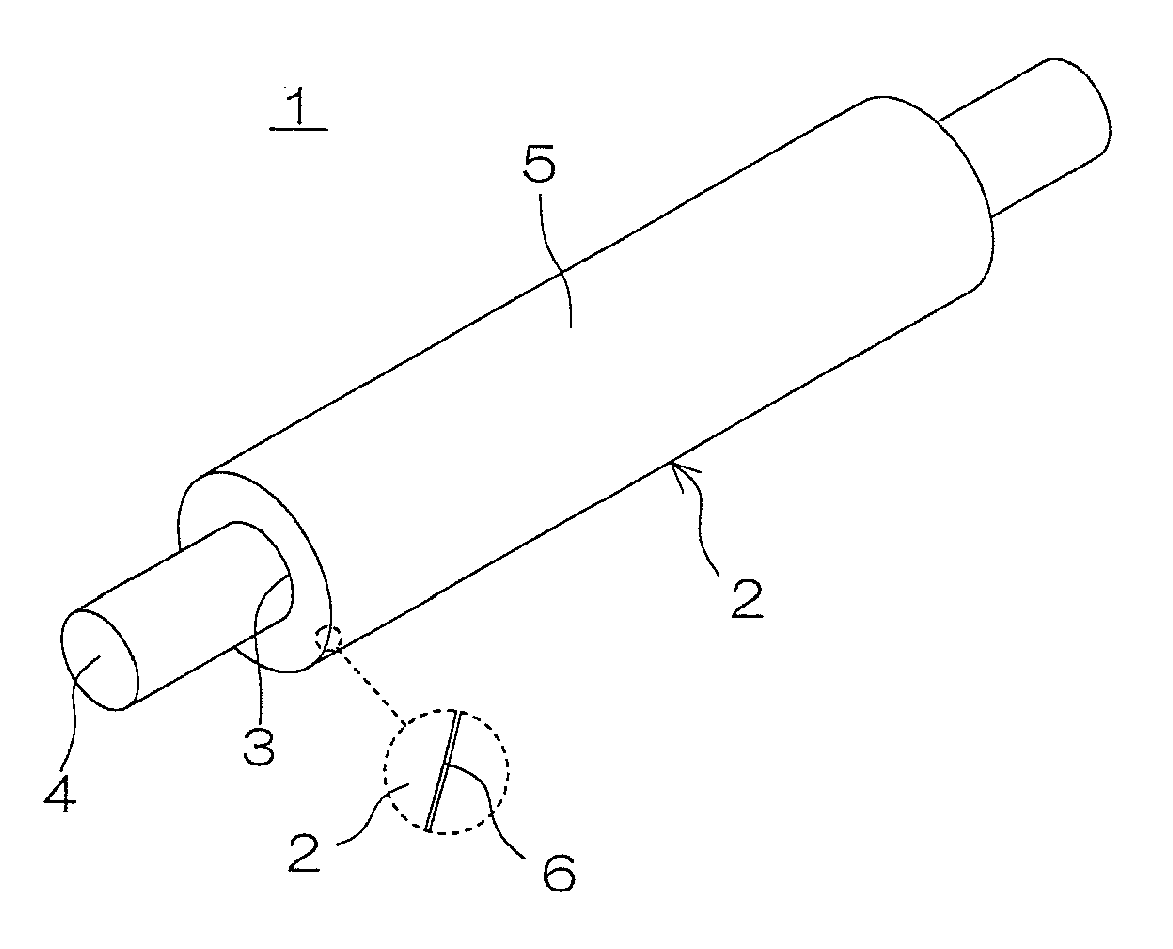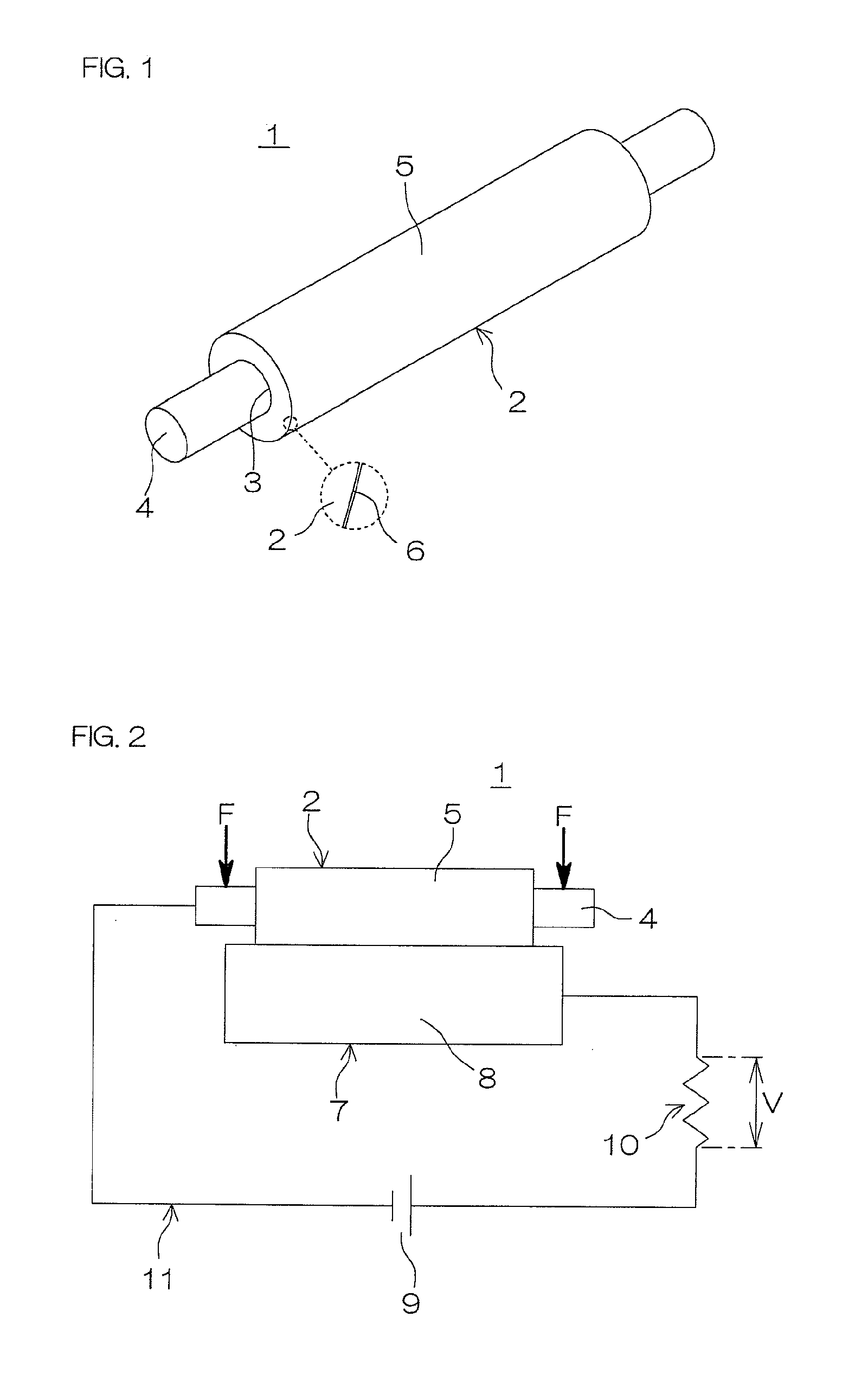Electrically conductive roller
- Summary
- Abstract
- Description
- Claims
- Application Information
AI Technical Summary
Benefits of technology
Problems solved by technology
Method used
Image
Examples
example 1
[0125]A base polymer was prepared by blending 60 parts by mass of ECO (EPICHLOMER (registered trade name) D available from Daiso Co., Ltd. and having an ethylene oxide content of 61 mol %) as the epichlorohydrin rubber E, and 10 parts by mass of CR(SHOPRENE (registered trade name) WRT available from Showa Denko K.K.) and 30 parts by mass of NBR (JSR N250 SL (lower-acrylonitrile-content NBR having an acrylonitrile content of 20%) available from JSR Co., Ltd) as the diene rubber N. While the base polymer was kneaded by means of a 9L kneader, 2.5 parts by mass of potassium bis(trifluoromethanesulfonyl)imide ((CF3SO2)2NK EF-N112, K-TFSI available from Mitsubishi Materials Electronic Chemicals Co., Ltd.) as the potassium salt and ingredients shown below in Table 1 were added to and kneaded with the base polymer. Thus, an electrically conductive rubber composition was prepared.
[0126]The mass ratio E / N between the epichlorohydrin rubber E and the diene rubber N was E / N=60 / 40.
TABLE 1Ingredi...
example 2
[0132]An electrically conductive rubber composition was prepared in substantially the same manner as in Example 1, except that 2.5 parts by mass of potassium bis(fluorosulfonyl)imide ((FO2S)2NK) K-FSI available from Mitsubishi Materials Electronic Chemicals Co., Ltd.) was blended as the potassium salt. Then, an electrically conductive roller was produced by using the electrically conductive rubber composition thus prepared. The mass ratio E / N between the epichlorohydrin rubber E and the diene rubber N was E / N=60 / 40.
examples 3 and 4
[0133]Electrically conductive rubber compositions were prepared in substantially the same manners as in Examples 1 and 2, except that the CR was not blended as the diene rubber N of the base polymer and the proportion of the NBR was 40 parts by mass. Then, electrically conductive rollers were produced by using the electrically conductive rubber compositions thus prepared. The mass ratio E / N between the epichlorohydrin rubber E and the diene rubber N was E / N=60 / 40.
PUM
 Login to View More
Login to View More Abstract
Description
Claims
Application Information
 Login to View More
Login to View More - R&D
- Intellectual Property
- Life Sciences
- Materials
- Tech Scout
- Unparalleled Data Quality
- Higher Quality Content
- 60% Fewer Hallucinations
Browse by: Latest US Patents, China's latest patents, Technical Efficacy Thesaurus, Application Domain, Technology Topic, Popular Technical Reports.
© 2025 PatSnap. All rights reserved.Legal|Privacy policy|Modern Slavery Act Transparency Statement|Sitemap|About US| Contact US: help@patsnap.com


